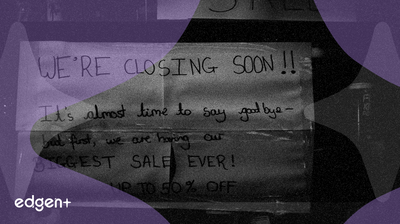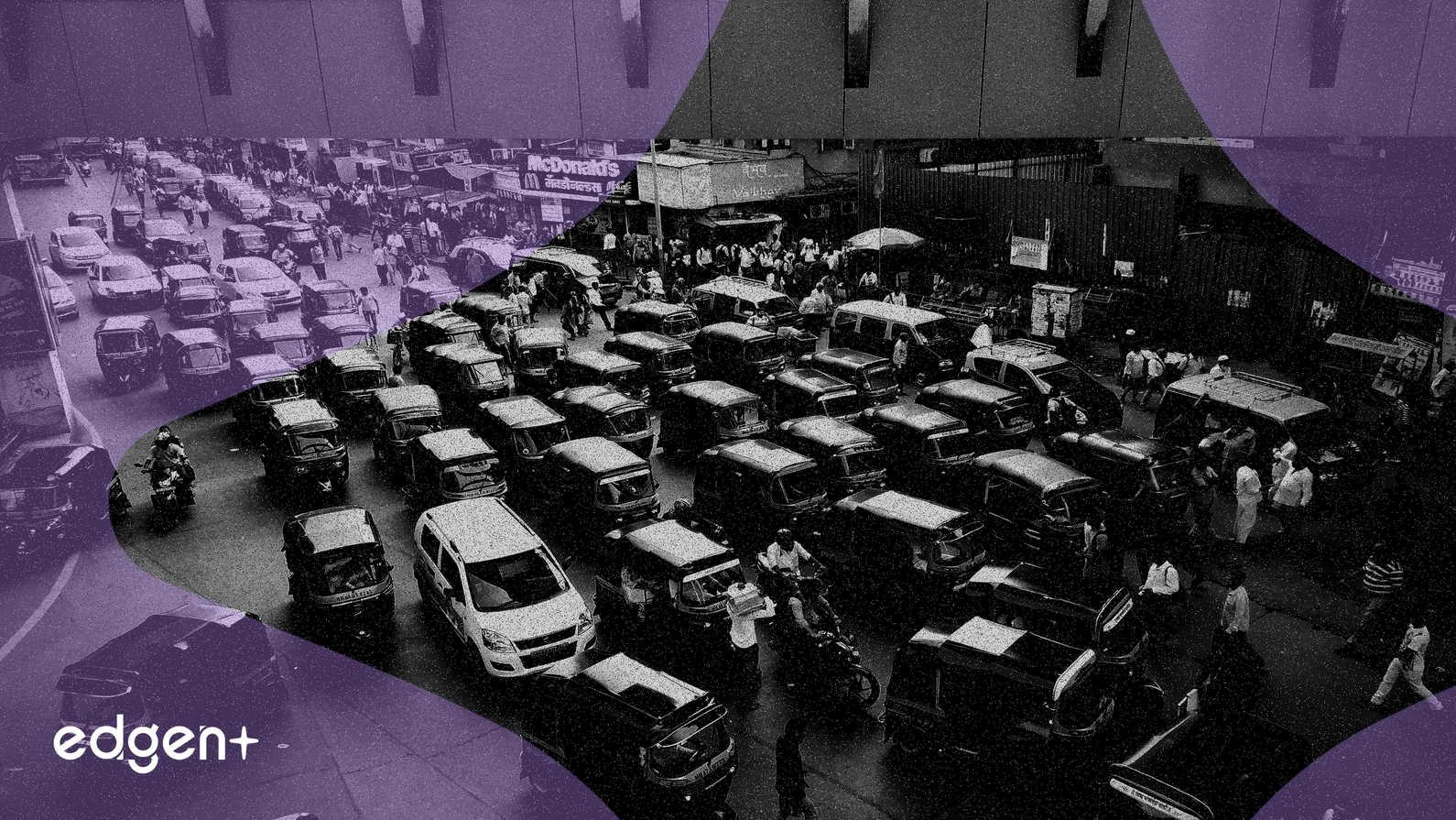Related News

Dick's Sporting Goods to Close 400 Foot Locker Stores Post-$2.4B Acquisition
## Executive Summary **Dick's Sporting Goods** has finalized its **$2.4 billion** acquisition of **Foot Locker** and will initiate a significant restructuring by closing 400 of the acquired stores by the end of 2026. This strategic consolidation aims to protect long-term profitability by trimming underperforming assets. The move comes as Dick's core business demonstrates robust health, reporting a 5.7% increase in comparable sales in its fiscal third quarter, far exceeding analyst expectations. In contrast, the newly acquired **Foot Locker** business is projected to see a comparable sales decline, highlighting the challenge and strategic importance of the integration. ## The Event in Detail The acquisition, valued at **$2.4 billion**, gives **Dick's Sporting Goods** control over **Foot Locker's** entire brand portfolio, including **Foot Locker**, **Kids Foot Locker**, **Champs Sports**, **WSS**, and **atmos**. The restructuring plan involves the targeted closure of 400 **Foot Locker**-owned locations over the next two years. Leadership for the integrated entity will fall to **Dick’s** executive chairman, Ed Stack, who will oversee the global **Foot Locker** business. The stated goal is to create a unified "global platform that will redefine the sports retail industry." While hundreds of stores are set to close, **Dick's** will continue to operate **Foot Locker's** other banners as part of its expanded portfolio. ## Market Implications The announcement has distinct implications for **Dick's** and the wider retail market. For **Dick's Sporting Goods**, the store closures are a calculated measure to absorb a major competitor while optimizing its physical retail footprint and improving operational efficiency. The company’s confidence in its core strategy is underscored by its decision to raise its full-year fiscal guidance for comparable sales growth to a range of 2% to 3.5%, up from a previous forecast of 1% to 3%. This suggests that the financial strength of its primary business is expected to buffer the costs and complexities of the **Foot Locker** integration. For the broader sporting goods sector, this move marks a significant consolidation of market power. The elimination of 400 retail locations will reshape the competitive landscape, potentially driving more customers to **Dick's** stores and its e-commerce platforms. ## Expert Commentary Analysts are focused on the divergent performance between the two entities. Paul Lejuez at **Citi Research** highlighted this contrast, projecting that **Dick's** core business saw comparable sales climb 5% in the third quarter, while the **Foot Locker** business experienced a 2.5% decline. This data reinforces the narrative that **Dick's** is acquiring a struggling asset with the intent to unlock value through strategic overhaul. Wall Street is now awaiting further guidance from **Dick's** management regarding expected cost synergies, the specific financial impact of the store closures, and the long-term turnaround strategy for the remaining **Foot Locker** brands. ## Broader Context This acquisition and subsequent restructuring occur within a challenging macroeconomic environment characterized by inflationary pressures and shifts in consumer spending. By consolidating the market and streamlining operations, **Dick's Sporting Goods** is positioning itself to better navigate these external pressures. The move to absorb **Foot Locker** is a bold offensive strategy, aimed not just at surviving market headwinds but at fundamentally increasing its market share and creating a more dominant global retail platform. The success of this integration will be a key indicator of future leadership in the sporting goods industry.

X to Replace Content Algorithm with Grok AI Following Drastic Staff Reductions
## The Event in Detail Elon Musk has announced that **X**, the social media platform formerly known as Twitter, will undergo a fundamental change to its content delivery system. The company intends to completely replace its existing heuristic-based recommendation algorithm with its proprietary **Grok** artificial intelligence model. According to Musk, the transition aims for the deletion of all heuristics within a four to six-week timeframe, with the goal of establishing a purely AI-driven content feed by November or December. This new system is designed to allow users to dynamically adjust their feeds by directly interacting with **Grok**, shifting the platform's focus from broad, trending topics to more niche, user-specified interests. ## Strategic Shift and Workforce Reduction This technological overhaul is a component of a broader and more aggressive strategy of automation and cost-cutting initiated since Musk's acquisition. The move to an AI-centric model coincides with a drastic reduction in the company's workforce. Reports indicate that staffing has been cut by over 80%, with the trust and safety teams responsible for global content moderation being reduced by nearly 90%. Musk has publicly framed these layoffs as a measure to enhance operational efficiency, a claim that is now being tested by the platform's reliance on AI for core functions. ## Market and Regulatory Implications The radical changes at **X** have produced significant market and regulatory consequences. Since the acquisition and the subsequent reduction in content moderation personnel, a notable number of advertisers have withdrawn from the platform, citing concerns over brand safety. Simultaneously, the platform's handling of user data has attracted regulatory scrutiny. The U.S. Federal Trade Commission (FTC) has launched an investigation into "radical changes" at the company, including the departure of key privacy and security executives and "alarming site outages." These developments have raised concerns that **X** may be in violation of a 2011 consent order with the FTC, an agreement the company is now seeking to terminate through federal court action. ## Internal and Legal Challenges The transition has been marked by internal turmoil and legal disputes. Former high-level employees, including the former head of information security, have filed lawsuits against **X**. These suits allege wrongful termination and claim the company conducted "sham investigations" to deny former staff their severance, bonuses, and vested equity compensation. These legal battles underscore the contentious nature of the workforce reductions and the high-stakes financial and operational restructuring underway at the company. ## Broader Context: Automation vs. Moderation **X**'s pivot to a **Grok**-powered feed represents a significant case study in the deployment of AI for large-scale content curation and moderation. The strategy pits the potential for hyper-personalized content and operational efficiency against the substantial risks associated with automated systems. These risks include the potential for product malfunctions, data access issues, and a qualitative decline in content safety. The success or failure of this initiative will have broad implications for the tech industry, particularly regarding the viability of replacing human-led content safety teams with artificial intelligence.

Fabrinet Stock Surges on Heightened Demand for AI Data Center Components
## Executive Summary **Fabrinet (FN)**, a key provider of optical communications equipment, has experienced a significant stock appreciation, with a recent single-day gain of 6.63%. The surge is directly attributed to the escalating demand for high-speed data transmission components essential for the expansion of artificial intelligence (AI) and machine learning infrastructure. This market movement underscores a bullish sentiment for companies that supply the fundamental hardware for the AI sector, positioning Fabrinet as a critical beneficiary of increased data center spending. ## The Event in Detail Fabrinet's shares rose 6.63%, with other reports noting intraday surges of up to 5.5%, following positive market analysis and a general sector uplift. The primary driver for this performance is the company's datacom business, which specializes in providing advanced optical cables and modules. These components are integral for high-bandwidth connectivity required to train large AI models, placing Fabrinet in a strategic position within the AI hardware supply chain. The market is responding to the clear link between growth in AI applications and the necessary upgrades in data center capabilities, where Fabrinet's products are mission-critical. ## Market Implications The performance of Fabrinet stock signifies a broader market trend of investing in the "picks and shovels" of the AI industry. While much attention has been focused on AI model developers and semiconductor giants, investors are now recognizing the significant value in the underlying infrastructure and component suppliers. Fabrinet's specialization in optical interconnects for AI data centers makes it a pure-play investment in this theme. The sustained demand for its products is expected to support revenue growth and solidify its market-leading position, potentially leading to further appreciation as data center spending continues to accelerate. ## Expert Commentary Institutional recognition has reinforced the bullish case for Fabrinet. **JPMorgan** recently raised its price target on the stock, signaling confidence in the company's ability to capture a larger share of the AI hardware market. Furthermore, the **FPA Queens Road Small Cap Value Fund**, in its Q3 2025 investor letter, highlighted Fabrinet as a holding, noting its dominance in the optical networking equipment sector. This commentary from established financial entities validates the company's strategic importance and strong execution. ## Broader Context Fabrinet's recent gains are part of a long-term growth trajectory, with its stock soaring 2,660% over the last 15 years. This historical performance demonstrates the company's consistent ability to capitalize on secular trends in the technology sector, from the general growth of cloud computing to the current AI-driven boom. By diversifying its offerings and focusing on high-growth segments like datacom, Fabrinet has established itself as a resilient and strategically positioned player in the technology manufacturing landscape. The current AI-related demand serves as another powerful tailwind for its established business model.
